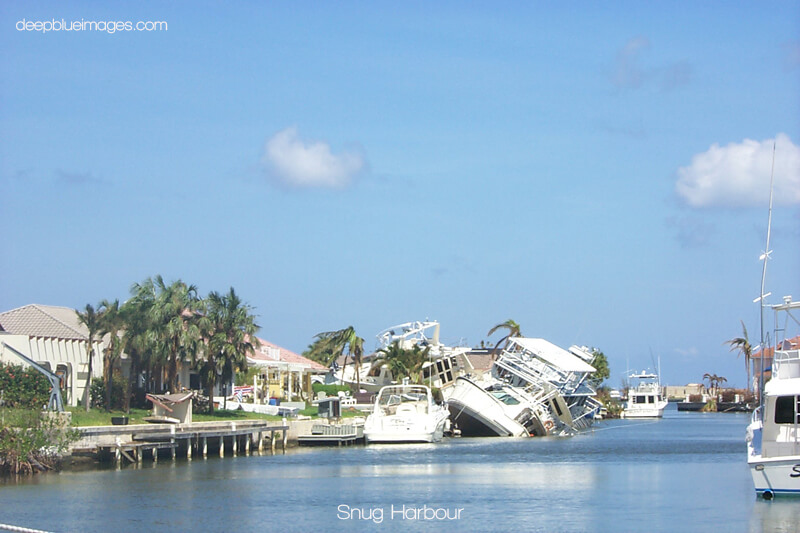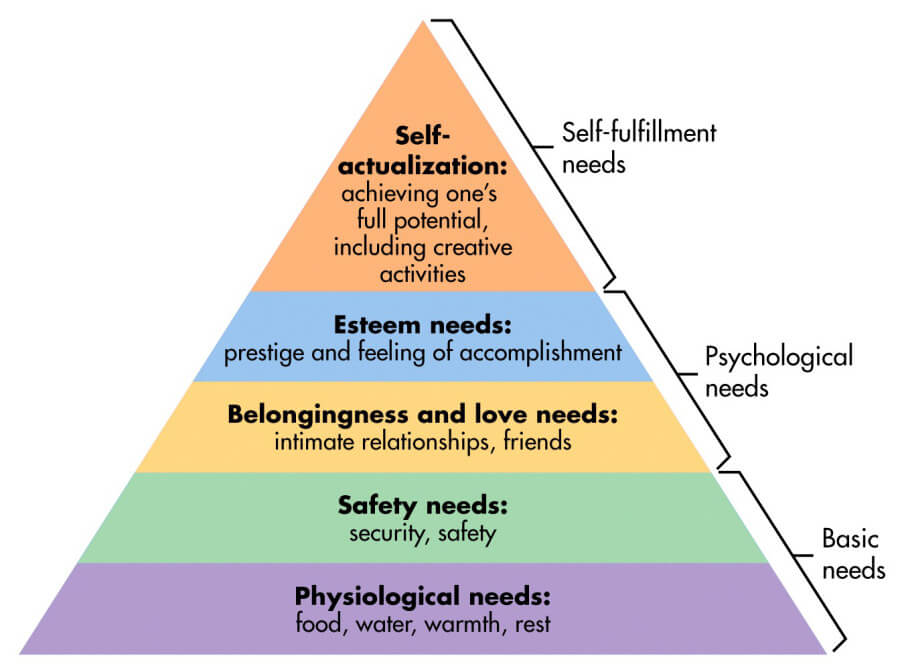
Recently I read an article on how Starbucks responded to Hurricane Irma hitting the USA. In the piece, it referenced Maslow’s hierarchy of needs.
This catapulted me back 14 years to one of the most powerful leadership and personal experiences of my life, the aftermath of Hurricane Ivan decimating the Cayman Islands.
Today let me share some of what I learned, referencing the work of Abraham Maslow and also how Chip Conley, shortly after Hurricane Ivan hit Grand Cayman, developed Peak, which became a book where he took Maslow’s hierarchy into business, which is how I first came across someone I am privileged to now call a friend.
Maslow’s hierarchy of needs

This is Abraham Maslow’s hierarchy of needs. Fairly self-explanatory, one key being that one can only operate at successively higher levels once the needs below that on the pyramid are met.
Hurricane Ivan – Cayman, knocked back to the stone age
On September 11, 2004, Hurricane Ivan sat over the Cayman Islands, with sustained winds of over 100mph for 24 hours.
Until you’ve experienced something like this, you have no idea what it feels like. For sustained winds of over 100mph, imagine a pressure hose spraying directly onto a wall, that is what the driven rain is like. Often even major hurricanes move fast, passing any one point in just a few hours. So, though when you are in it, those few hours feel like a lifetime, now imagine the Hurricane Ivan experience. It went on for so long that it was beyond surreal.
When we finally emerged, it was eerily silent. There was no bird life. Every leaf had been stripped off any of the few remaining trees standing. Every other green surface was now burned brown by the sustained salt-laden rain blasting it. 95% of all buildings sustained damage. Over one-quarter of all the vehicles on the island had been written off by rising salty flood waters.
In all of this, I was married with three children, the youngest under one year old. Add to that the power was down and the temperature was excruciatingly hot and humid, with no relief. We were lucky though, we had a roof over our heads, felt safe, and had one roadworthy car and food and water. We even had the luxury of a gas powered cooker and toilets we could flush with buckets of water.
Now, look up at Maslow’s pyramid. So many people were struggling for the first two levels. In fact, there had been looting for the first couple of days, not out of criminality but out of human fear of lack of food, water, shelter. People simply do not act normally when their basic needs are not met.
Now, let me look at the response of two (I won’t name them) prominent professional service firms and how they acted. We will then imagine how they might have acted differently if they’d understood Maslow, or even looked at Chip Conley’s PEAK, so first, let’s take a quick “peek” at PEAK.

In Peak (full title “Peak: How Great Companies Get Their Mojo from Maslow“, Chip brilliantly relates Maslow’s work to leading a business or organisation.
I LOVE this book, and so does the great Stephen Covey, writing:
“Chip Conley gives a brilliant analysis of the absolute necessity of Maslow′s hierarchical paradigm in unleashing the talent and commitment of customers, employees, owners in fact, stakeholders. Great resource material for leaders, trainers, educators, even parents. Chip practices in his hotels what he teaches most successfully!”
Today, though, I simply draw your attention to one of the several pyramids Chip draws in PEAK, and note that the base layer for Employee Relationships revolves around one thing, money.
Now, back to Cayman, and the stories of the two anonymous professional service firms.
Some background first. At the time directly after Hurricane Ivan, Q4 2004, the Cayman Islands offshore financial services industry was having the biggest boom yet, with an insatiable demand for work coming from clients around the world.
Leaders of the firms, however, faced real problems in meeting client needs. Right after the hurricane, many people simply evacuated. It was rough, trust me. I evacuated my family for over four months, staying behind and operating in almost military crisis mode for months on end. An amazing experience that drew on all my abilities and energy. I can’t say I’d love to repeat it, but it was truly amazing to go through!
So, not only had they evacuated, but even though many of their professional staff could work remotely, for regulatory and tax reasons they were limited in the work they were permitted to do after a short period away from Cayman.
In short, the firms needed their people back at work in Cayman, yet many had no homes to live in and no sign of when rebuilding would be complete.
So, review Maslow’s hierarchy, with base layers around physiological and safety needs. Now consider Peak, and recognise that in building this for businesses Chip was absolutely assuming that such basic needs are met for people before considering his employee relationship model.
Finally, what did the two different firms do?
Firm 1 simply emailed their staff spread around the world, first asking them to come back to Cayman, and right away. When that didn’t get enough people back, they offered them more money and bonuses to do so. When that didn’t work they threatened to terminate their employment. They used one tool and a very blunt instrument at that. Money. That same firm, when handling their relationship with the staff who had remained on the devastated island, used that same blunt instrument.
What did firm 2 do then? They contacted their staff and asked them for their personal circumstances. What were their living conditions, if they had children or other family to care for, what about them? In the early days after the hurricane, they flew in generators for power, water, even nappies/diapers and other baby care requirements. Yes, they looked at money, but only integrated with understanding that you can’t solely use that blunt instrument.
It is fair to say that firm 2 found it far easier to get their staff back to work, plus enjoyed higher employee motivation, satisfaction and retention for years later.
Whilst Cayman is a small island and so this is not exactly taught openly in classes and HR development courses, these and other stories of such a time of crisis are widely known and lessons have been learned.
As to Firm 1, as with many of the other leaders of such firms in Cayman at the time, I knew several of their leaders personally. My assessment is that they were doing the best they can, they simply had a relationship to their employees that, per Chip’s PEAK pyramid, was one of providing them with a job (hence money as a tool), rather than a career or calling.
So, what is your relationship with your employees? What is your responsibility to them? Job, career, calling? I agree with Chip’s concepts and the higher up that pyramid you choose to go, the deeper the relationship goes and the value all parties take from it.
